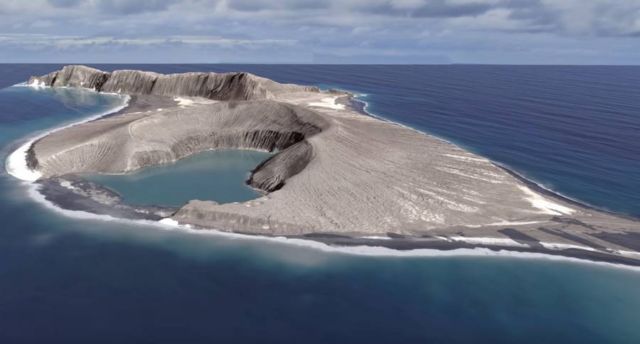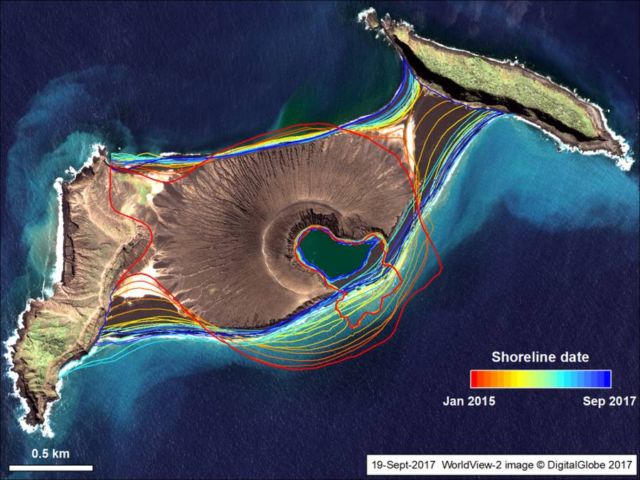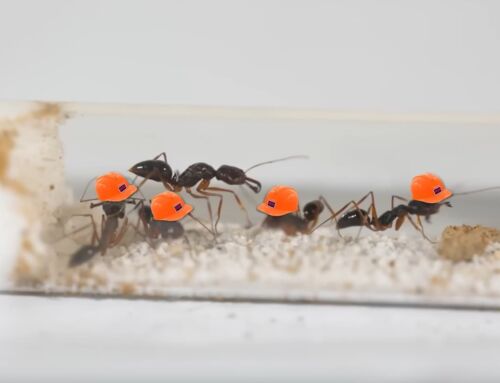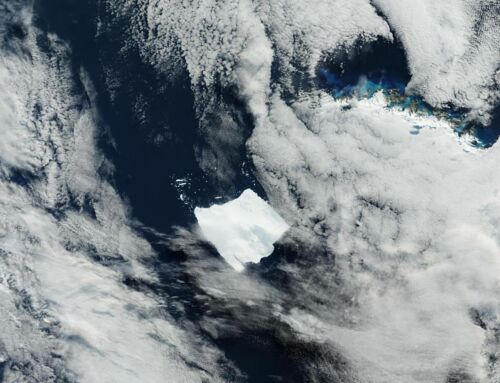In late December 2014, a submarine volcano in the South Pacific Kingdom of Tonga erupted. When the ash finally settled after a month, a newborn island with a 400-foot summit nestled between two older islands.
The newly formed Tongan island, unofficially known as Hunga Tonga-Hunga Ha’apai after its neighbors, was initially projected to last a few months. Now it has a 6- to 30-year lease on life, according to a new NASA study.
Hunga Tonga-Hunga Ha’apai is the first island of this type to erupt and persist in the modern satellite era, it gives scientists an unprecedented view from space of its early life and evolution.
The new study offers insight into its longevity and the erosion that shapes new islands. Understanding these processes could also provide insights into similar features in other parts of the solar system, including Mars.
Changes to Hunga Tonga-Hunga Ha’apai’s shoreline over time are overlain atop a September 2017 satellite image. Image credit NASA/DigitalGlobe
[Youtube]







Leave A Comment